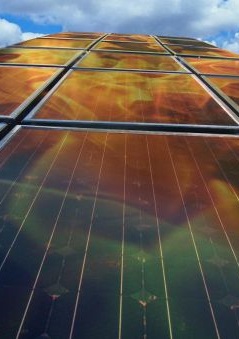Holograms boost solar yield
 Researchers are coming up with new ways to harvest the unused solar energy that illuminates a solar panel.
Researchers are coming up with new ways to harvest the unused solar energy that illuminates a solar panel.
The energy available from sunlight is 10,000 times more than what is needed to supply the world's energy demands.
Sunlight has two main properties that are useful in the design of renewable energy systems. The first is the amount of power falling on a fixed area, like the ground or a person's roof, the second is the colours or spectrum of the sunlight.
The solar cell works best when certain colors of sunlight fall on it, and when the whole area is covered by photocells.
However, some panel area is needed to connect the cells, and the solar cell shape may not allow all of the remaining panel area to collect sunlight. These effects make the solar panel less efficient than it could be.
In an innovative new technique, researchers at the University of Arizona have created special holograms that can be easily inserted into the solar panel package.
Each hologram separates the colors of sunlight and directs them to the solar cells within the solar panel.
This method can increase the amount of solar energy converted by the solar panel over the course of a year by about five percent. The team says it could reduce both the cost and the number of solar panels needed to power a home, a city, or a country.
The holographic light collector combines a low-cost holographic optical element with a diffuser. The optical element is situated symmetrically at the center of the photovoltaic module to obtain the maximum effective light collection.
In tests so far, they experts achieved a five per cent increase in the yield of solar energy.
This would have a massive impact when scaled to even a small fraction of the 100s of gigawatts of photovoltaics being installed globally.
More details are accessible here.







 Print
Print